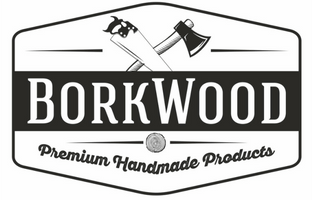Quick Guide to Squarespace speed optimization Techniques
When it comes to a fast-paced digital environment, users just hate to wait for a page to load. A statistical research shows that one second of page loading time decreases conversions drastically. Finally, for businesses operating from Squarespace, Squarespace speed optimization is very important in terms of both enhancing the site user experience and ranking on the search engines.
This guide will help you navigate the essential techniques for Squarespace speed optimization to ensure your site runs smoothly and efficiently.
Explaining Why Squarespace speed optimization is so Important
Squarespace speed optimization is more than a fundamental requirement for web performance: it’s an integral part of your online strategy. Some of the benefits associated with fast loading of websites include; a smaller percentage of bounced visitors, high level of customer retention, and improved search engine rankings. Hence, when a website loads fast, users tend to spend more time on your web page hence increasing the chances of you making sales. On the other hand, if it takes too long to load the site, it is often very unprofessional and would scare away potential customers hence little sales and a bad reputation.
Key Techniques for optimizing speed of your Squarespace website
1. Optimize Images
One of the most common culprits of slow loading times on Squarespace websites is unoptimized images. High-resolution images can dramatically increase load times. To combat this, ensure that all images are appropriately sized and compressed before uploading. Use tools like TinyPNG or ImageOptim to reduce file sizes without sacrificing quality. Consider using WebP format for images, which provides superior compression compared to traditional formats like JPEG or PNG.
2. Limit the Use of Custom Fonts
While custom fonts can enhance the visual appeal of your site, they can also hinder speed if overused. Each font variation (like bold or italic) increases the load time. Stick to a limited number of fonts and consider using system fonts, which typically load faster. If you do use custom fonts, ensure that you only include the weights and styles you actually need.
3. Use a Content Delivery Network (CDN)
A CDN helps distribute your website’s content across various servers worldwide, which can lead to faster load times for users regardless of their location. Squarespace comes with built-in CDN support, but make sure your assets (like images and scripts) are served through it. This way, your users can access content from the nearest server, significantly improving load times and enhancing your Squarespace speed optimization efforts.
4. Minimize Code and Scripts
The amount of code on your website can also affect its speed. Review the custom CSS and JavaScript code you have implemented and remove any unnecessary scripts. Minification tools can help by removing white spaces and comments from your code, which reduces file sizes and speeds up load times. Be cautious, though, as some code may be essential for functionality; test thoroughly after making adjustments.
5. Reduce Redirects
Redirects can create additional HTTP requests, which can slow down your website. Each redirect introduces latency, causing users to wait longer to access content. Regularly audit your site for redirects and eliminate any that are unnecessary. If you need to redirect, ensure it’s done using 301 redirects to maintain SEO value while minimizing load impact.
6. Implement Lazy Loading
Lazy loading is a technique that delays the loading of images or videos until they are needed. Instead of loading all media on the initial page load, only the visible content loads first, significantly improving the perceived speed of the website. Squarespace supports lazy loading, which you can enable to enhance your site’s performance and is a fantastic addition to your Squarespace speed optimization plan.
7. Optimize Page Layout
The layout of your page can also affect load times. Use a clean and simple design that focuses on essential elements. Avoid overly complex layouts that require extensive CSS and JavaScript. Simplifying your design not only helps with speed but also enhances user experience by making navigation intuitive.
8. Regularly Monitor Performance
Keeping tabs on your website’s speed is vital for ongoing optimization. Utilize tools like Google PageSpeed Insights or GTmetrix to regularly analyze your site’s performance. These tools can provide valuable insights into what aspects of your site may be slowing it down, allowing you to make necessary adjustments promptly.
A website speed optimization tool in just few clicks – Website Speedy
For people seeking for an effective tool allowing improving the speed of Squarespace site, Website Speedy becomes the best choice as a website speed optimization tool. It’s a SaaS tool to improve the speed of a web page with no coding skills. With it, it is possible to analyze your site and fine tune all the essential factors like code and other core web vitals so that the end-users have a smooth experience navigating through your site.
Let’s sum it up in few words
In the current increased online business competition, the most important thing is getting it done first. If you will apply all these Squarespace speed optimization ways that are mentioned above, then you can turn the overall performance of your website up to the new level and make the users much happier and ready to convert. Website Speedy is an excellent solution for those who don’t want to overcomplicate the problem and just want an effective tool to increase their site’s speed. It will help you to improve your business site without losing time and customers, and becomes a crucial part of any web plan.
A slow website is never an option – don’t wait to take control over your web image right away!







